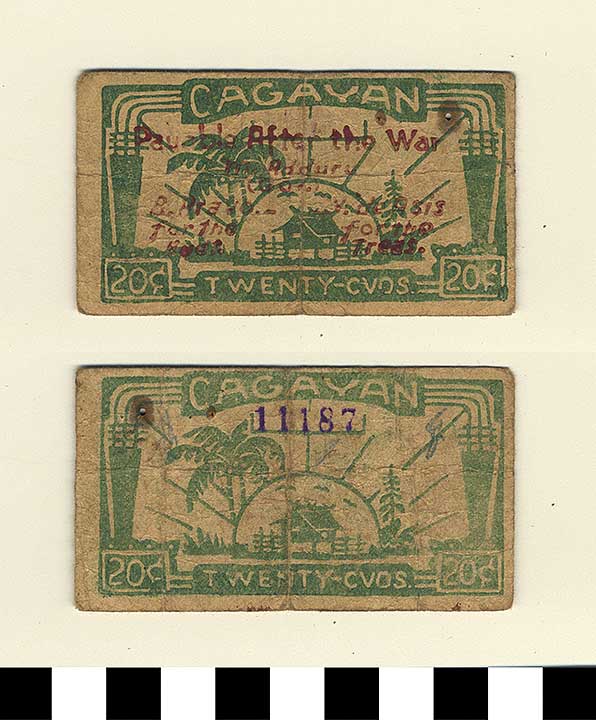Philippine Commonwealth Government Province of Cagayan Emergency Circulating Bank Note: 20 Centavos
1992.23.1729
Detailed Images
Basic Information
| Artifact Identification | Philippine Commonwealth Government Province of Cagayan Emergency Circulating Bank Note: 20 Centavos (1992.23.1729) |
|---|---|
| Classification/ Nomenclature |
|
| Artist/Maker | Unknown |
| Geographic Location | |
| Period | N/A |
| Date | 1942-1945 |
| Culture | Filipino |
| Location | Not on Exhibit |
Physical Analysis
| Dimension 1 (Length) | 17.2 cm |
|---|---|
| Dimension 2 (Width) | 4.2 cm |
| Dimension 3 (Depth) | <0.1 cm |
| Weight | <1 g |
| Measuring Remarks | N/A |
| Materials | Paper, Pigment--Ink |
| Manufacturing Processes | Printed |
Research Remarks
| Description | N/A |
|---|---|
| Published Description | Under Review |
| Bibliography | Columbia Encyclopedia . (1963) Third Edition. New York: Columbia University Press. |
Artifact History
| Credit Line/Dedication | Gift of Harlan J. and Pamela Berk |
|---|---|
| Reproduction | no |
Contact
All information about our collection is constantly reviewed and updated. Please contact Dery Martínez-Bonilla, Registrar, if there is any information you are looking for that isn't currently online.
